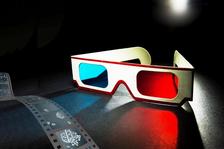A German-Swedish collaboration of three research groups from University of Hamburg, DESY, and KTH Royal Institute of Technology in Sweden has been awarded a grant in the framework of the Röntgen-Ångström Cluster. In their joint project XStereoVision, the scientists will develop a new X-ray imaging technique for 3D in-situ investigations of nanoparticle formation in liquid environments on the nanoscale.
In the chemistry of nanomaterials, shape evolution and morphological transformation processes are often decisive for their functionality and performance. In many cases, however, the origin and dynamics of these morphological changes are not well understood, which is mainly due to the difficulty in observing them in-situ or operando under relevant conditions. Electron microscopy (EM) – currently the main method for in-situ visualization of nanomaterials on the nanometer scale – allows to image a very limited number of nanoparticles due to small accessible fields of view. “Moreover, the in-vacuum sample environment of EM microscopes restrains severely the choice of nanoparticle synthesis routes,” says Dorota Koziej, leader of the Hybrid Nanostructures Lab at the Center for Hybrid Nanostructures (CHyN) at the University of Hamburg.
On the other hand, hard X-ray microscopy at synchrotron radiation facilities can offer competitive in-situ nanoimaging capabilities, since hard X-rays have both the necessary short wavelength and high penetration power required for high-resolution 3D imaging of thick and extended samples. A standard X-ray tomographic experiment requires rotation of the specimen with respect to the fixed X-ray beam. Yet, imaging of liquids typically involves the use of a bulky sample environment which effectively prevents any rotation. The new project aims to overcome this by developing a new stereoscopic scanning X-ray imaging technique with an enhanced depth resolution. By illuminating the sample with two nano-focused X-ray beams simultaneously at different angles, the scientists expect to obtain 3D structural information from 2D scans.
Reaching this milestone requires an ultrastable X-ray microscope, the development of which will be the main task of the DESY group around Christian Schroer. “In recent years, our group has designed and successfully brought into operation the PtyNAMi experimental setup for quantitative microscopic investigations of specimens down to ten nanometres spatial resolution,” says Schroer. The instrument is available to external users in the nanohutch of beamline P06 at DESY's synchrotron X-ray source PETRA III and offers several highly advanced nano-imaging techniques.
In the PtyNAMi microscope, the highly brilliant X-rays of PETRA III are focused into a nano-sized spot across which the sample is scanned to produce an image. Several complementary contrasts allow to visualise the sample’s density distribution or its chemical composition. “Within the scope of the project XStereoVision, we will use our experience to extend the capabilities of the PtyNAMi setup to stereoscopic X-ray microscopy for in-situ applications,” says DESY scientist Andreas Schropp. Ensuring outstanding mechanical stability, careful control of the measurement conditions, and efficient data acquisition routines, scientists aim to reach the few-nanometer resolution regime, perfectly suitable for visualizing chemistry on the nanoscale.
In the new stereoscopic X-ray microscope, X-rays will be focused into two beams that cross each other in the sample and illuminate it from two different perspectives. To accomplish this, a special set of highly efficient X-ray focusing zone plates (lenses) is required. Their careful design and fabrication will be the task of the group around Ulrich Vogt from the KTH Royal Institute of Technology, Sweden – a leading player in diffractive X-ray optics.
Finally, the envisaged stereo X-ray microscope will be complemented with a new sample environment permitting chemical reactions of liquids under different temperature conditions. “In such a liquid cell, developed at CHyN, we hope to follow and image nucleation and structural changes of nanocrystals in solution at spatial resolutions better than ten nanometres,” says Koziej. The groups from DESY and the University of Hamburg will also join forces to propose new data processing and reconstruction algorithms to decode the stereoscopic sample image from the two-beam diffraction patterns.
The researchers will verify their new imaging technique by conducting experiments both at DESY´s beamline P06 at PETRA III and at the NanoMAX experimental station at the MAX IV synchrotron in Lund, Sweden. “Looking towards the future, we believe that this new in-situ X-ray nano-imaging method will allow for an optimal use of dramatically brighter X-ray beams at emerging diffraction-limited synchrotron facilities, such as the planned PETRA IV storage ring. We also expect to offer the technique to a broader community of scientific and commercial users,” says Schropp. “With this new stereoscopic X-ray microscope, we will be able to follow the time evolution of morphological, elemental, and chemical composition in 3D of nanomaterials relevant to energy-related science, nano-electronics, and solar cell technologies,” summarizes Koziej.
The project XStereoVision has received funding from Germany's Federal Ministry of Education and Research (BMBF) within the framework of the Röntgen-Ångström Cluster (project number 05K20GUA). The project has started on July 1, 2020, with a duration of four years.
Röntgen-Ångström-Cluster: https://www.rontgen-angstrom.eu







